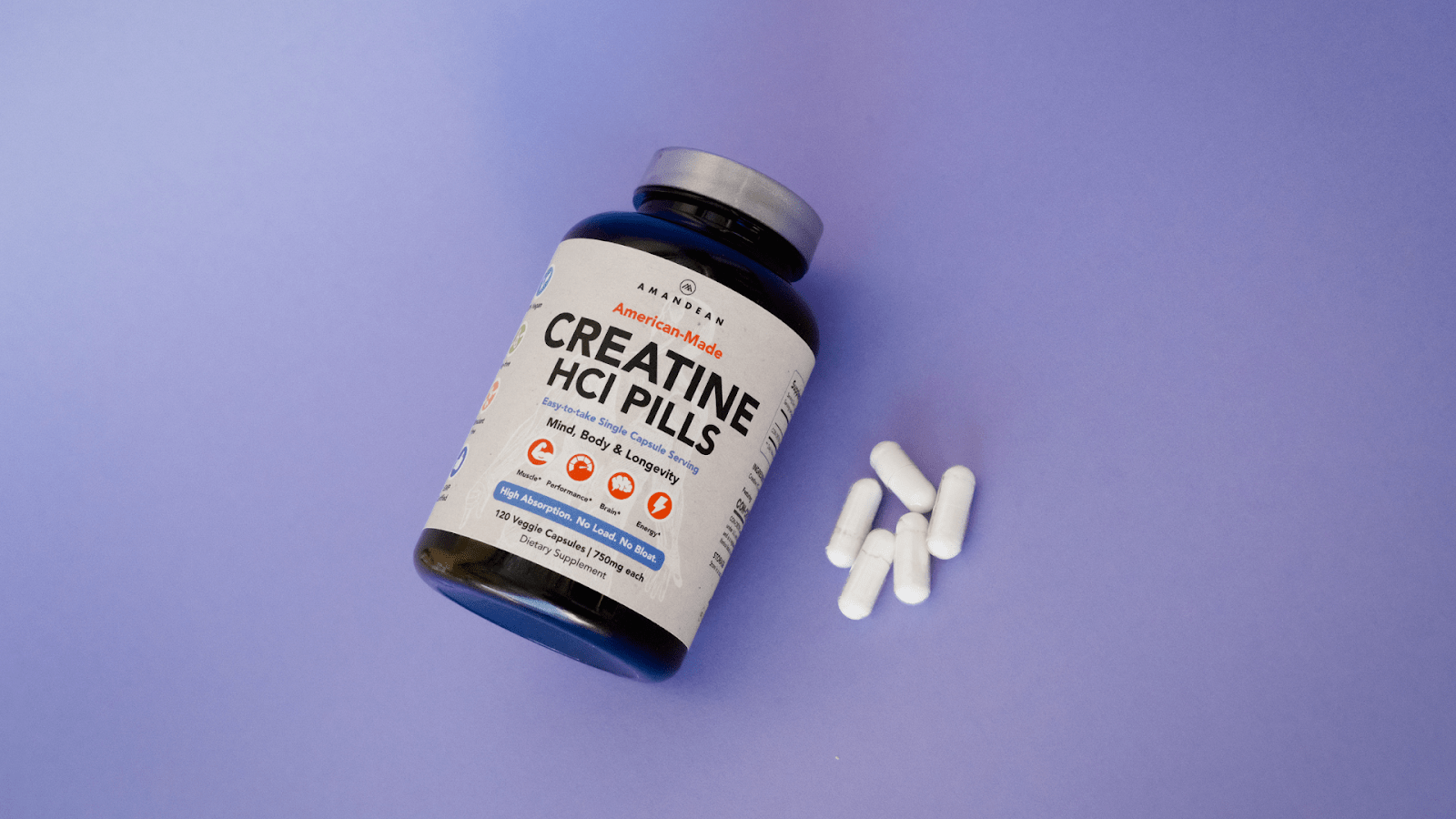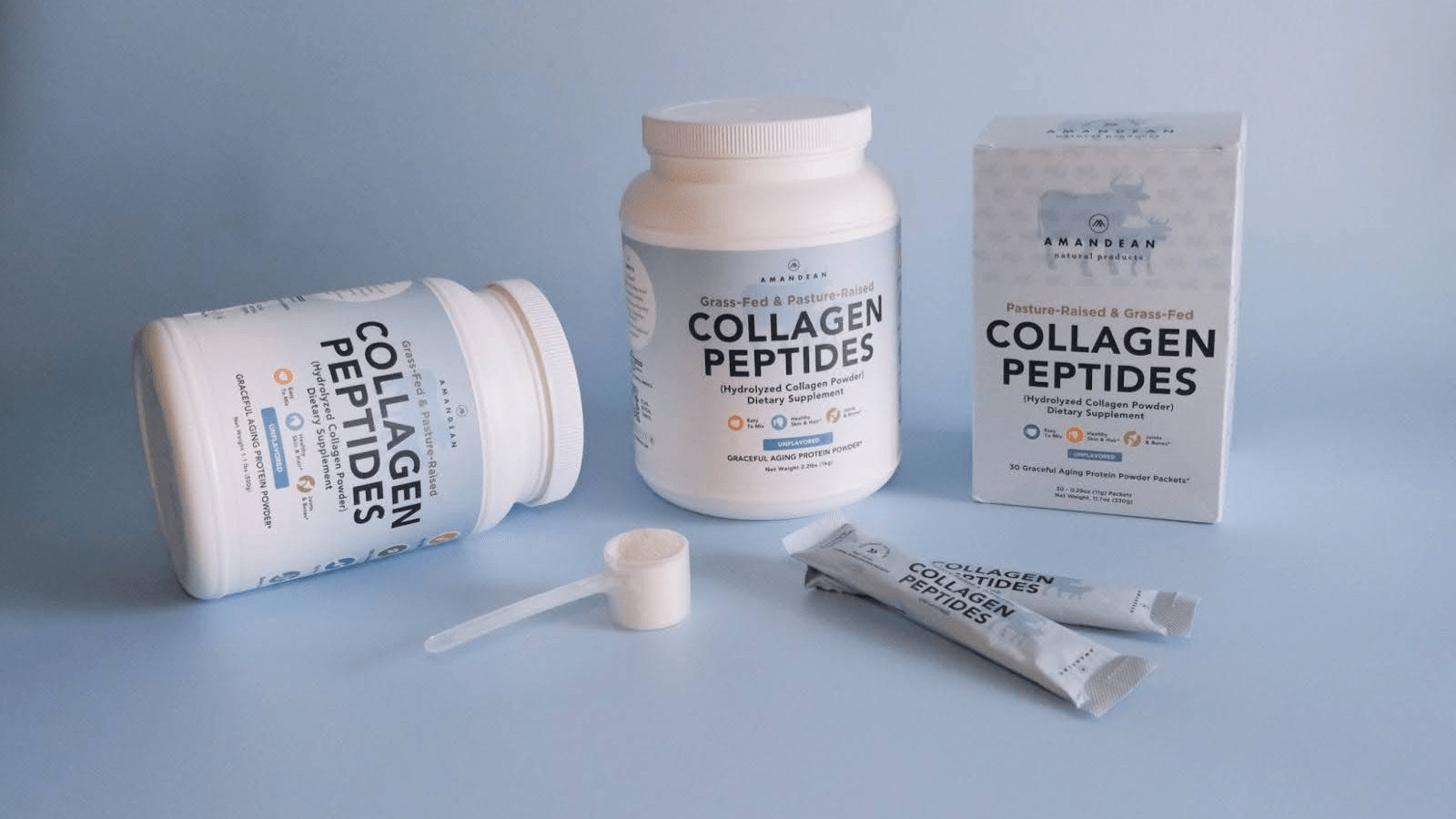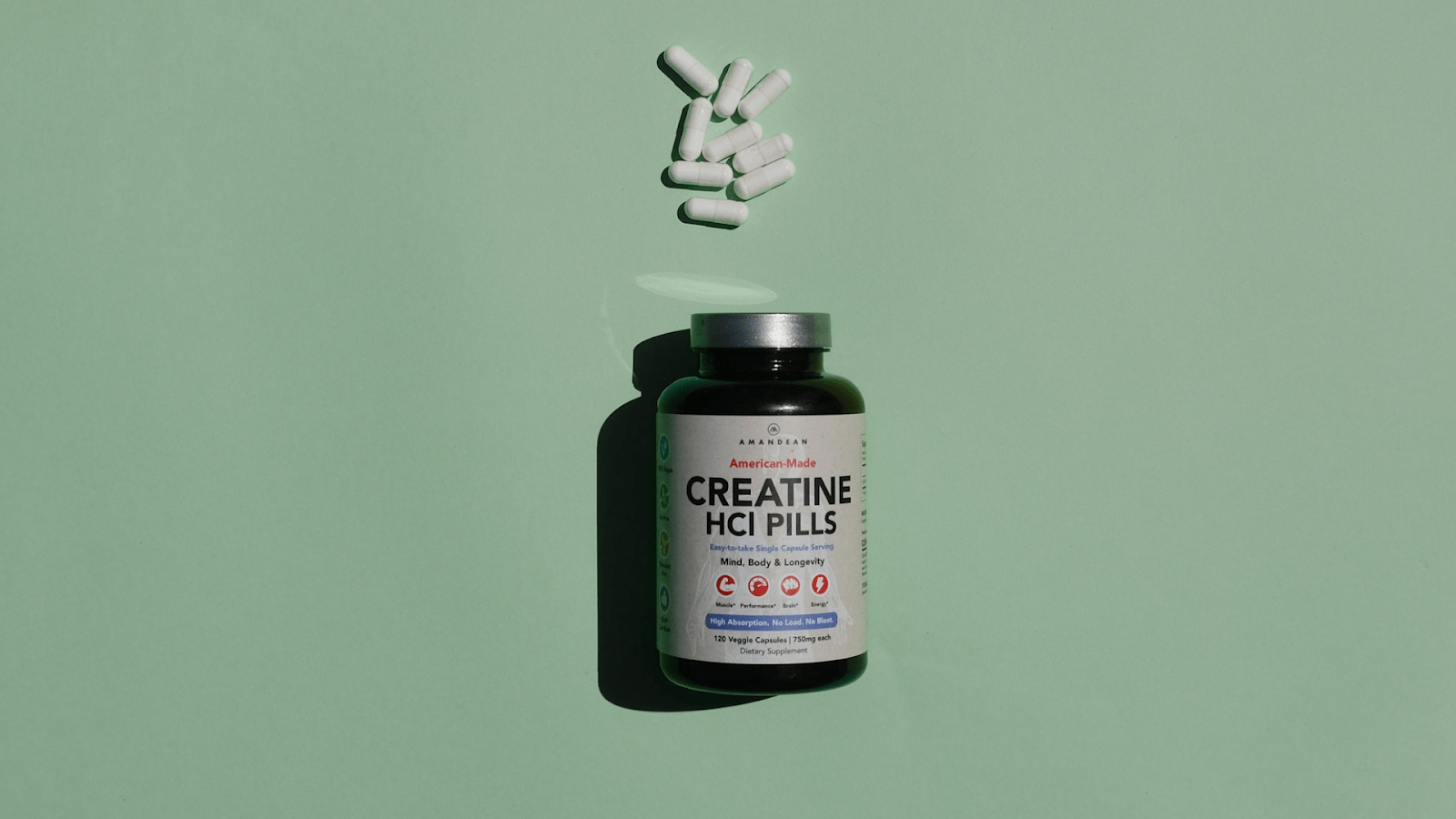Your Cart is Empty

October 31, 2018 7 min read
A competent dietitian gave my brother a wealth of advice regarding lifestyle modifications he should perform in order to build lean muscle and pack on size. He said, “If you want to lose 0.5lb in one day, don’t drink water. At the end of the day, your weight will have decreased by approximately 0.5lb. This fake result should never be your ultimate goal”.
Building muscle is very similar. It isn’t a simple goal that can be achieved in just a couple of weeks, but rather a long journey that takes months of hard work, patience, motivation, and, of course, a healthy lifestyle as a base.
In today's article, we’re going to discuss the role of Marine Collagen in building lean muscle, as well as provide some helpful tips to help you along the journey.

Train hard and more than 3 times a week if you can. Train until your extremities shake like spaghetti. Then take the necessary rest to recover from muscle soreness and let your body rejuvenate. It’s well known between athletes who aim to increase their muscle size that time under tension “TUT”is a required part of building muscle.
This stressful time ensures that the muscles are obtaining enough of the stimulant needed to spur changes in size. In fact, putting your muscles under longer bouts of strain can cause extensive muscle breakdown which consequently leads to larger bulk. This unusual mechanism of building muscle has a strong biological basis.
As noted in multiple studies, the total free intracellular amino acid concentration is elevated immediately after exercise., This breakdown is balanced by a subsequent stimulation of muscle protein synthesis in recovery, where amino acid uptake by the muscle is increased (1). This fact brings me to our second important tip for lean muscle building:
“Protein is one of the preferred nutrients of athletes because of its ability to stimulate muscle protein synthesis”, Dr. Christine Rosenbloom declared, professor of nutrition at Georgia State University. She has over 20 years of experience as a sports dietitian and has answered an important question about protein timing, which appears to be the most critical factor in achieving positive training goals for athletes. Dr. Rosenbloom emphasized the importance of the period immediately after exercise for consuming protein and how this is related to building muscle and muscle recovery.
This advice makes sense as protein ingestion is vital to replenishing broken protein from muscle breakdown (2).
One of the multiple studies that confirms this line of thinking was conducted at The Institute of Sports Medicine in Copenhagen. Researchers there designed a study to investigate protein synthesis rates in the human patella tendon and quadricep muscles after exercise when an infusion of amino acids takes place.
The results showed that the fractional synthetic rates of all proteins were elevated post-exercise while collagen synthesis in muscle increased by ~ 3.5 folds. This is a major protein biologically synthesized in tendons and muscles post-workout.
Skeletal muscle protein is made from myofibrillar and sarcoplasmic proteins (the bulk/mass of a muscle) and collagen protein that constitute the connective tissue (the skeleton of a muscle) which is considered to be “the most abundant protein in mammals.”
Critics afirmed the results commenting that any increases in the mass of muscle fibers can only be fully functional if there were remodeling of the connective tissue surrounding them, as well as of the tendon connecting the muscle to bone (3).
Too much can be as bad as too little when it comes to any exercise. The recovery process is a very serious part of any fitness program and in particular when it comes to bodybuilding.
"There will be times when a body part lags behind because you are overtraining it, hitting it so hard, so often, and so intensely that it never has a chance to rest, recuperate, and grow," Arnold Schwarzenegger, one of the greatest bodybuilders of all time, finds. A crucial rest period involves a decline in strength and muscle mass. One of the best recommended strategies to minimize this loss is to have a well-balanced diet rich in protein.
Inadequate protein ingestion will hinder wound healing and increase inflammation to potentially harmful levels. The healing process is heavily reliant on collagen synthesis and other proteins, so getting enough protein is a must (4).

In this context, a study accomplished to evaluate the effectiveness of Collagen Peptides in relieving joint pain that results from activity-related or functional joint discomfort found that bioactive Collagen Peptides treatment over a longer period of time (more than 12 weeks) is effective in individuals putting their joints under stress (5).
Part of the recovery process is also to ensure adequate sleep quality on a consistent basis. Sleep affects the secretion of the growth hormone GH, which affects the synthesis of skeletal muscle.
It’s documented that the amount of GH secretion was significantly associated with slow-wave sleep, which correlates with the onset of sleep (6).
Collagen Peptides can be very helpful with this important aspect of recovery as they promote quality of sleep. In fact, thanks to the high level of glycine content in Collagen Peptides, it contributes to the effect of enhancing subjective sleep quality and sleep efficacy (sleep time/in-bed time) and shortening sleep onset (7).
Focusing on high protein intake generally holds no adverse effects on the body, but some people can endure kidney problems due to the high nitrogen content in protein sources (8). For this reason, hydration is of vital importance and drinking large quantities of water every single day is paramount. For those that don’t enjoy the taste of water on its own, adding a squirt of lemon or lime can help you to reach adequate hydration levels and also add health benefits.
This tip is for you ladies. Speeding up your metabolism, obtaining curves in the right places, increasing the burning of calories while working out, increasing your daily energy, improving sleep quality, and increasing endorphin release while working out are just some of the great benefits of weight-lifting for females.
Since many women are worried about “bulking up” by lifting weights, they should keep in mind that due to our much lower testosterone levels than men and our “major anabolic hormone” in women compared to men, we need not worry about this bulk.
There are very very few women who will bulk up by lifting weights without an extreme bodybuilding training regime in both the gym and diet. As Rowdy Yates, a fitness manager at Crunch Fitness in New York City, says, "It’s nearly impossible to turn a woman into a She-Hulk. Fat loss is much easier to achieve than muscle gain".
In conclusion, one secret weapon of those looking to build more lean muscle is a Premium Collagen Supplement. A highly bioavailable Collagen Hydrolysate can work like an all-natural catalyst that can decrease muscle breakdown after workouts by providing the body with the required amount of amino acids to build muscles again. Furthermore, a daily collagen supplement will help to lessen any joint pain experienced during the the recovery period.
As a pharmacologist, I would like to provide one final tip regarding the type of collagen supplementI would most recommend for lean muscle gains in both men and women.
One of the best collagen sources for building muscle is Marine Collagen. Collagen from a marine source is the most bioavailable source of collagen in humans to ensure absorption of amino acids. When you take a daily scoop of Marine Collagen its nutrients are almost completely absorbed into the bloodstream, so that these amino acids are available to muscles to use immediately.
Amandean’s Wild-Caught Marine Collagen is one of the highest-absorbency collagen supplements on the market. It's made from wild-caught cod sourced from the pristine waters of the North Atlantic. Amandean's product is also gluten-free, fat-free, sugar-free, unflavored, and easy-to-mix into your morning coffee, breakfast smoothie, or glass of water to help you hydrate while you’re training. Learn more about the health and muscle-building benefits of Amandean’s Wild-Caught Marine Collagen in our online store.

Take our quiz and find which supplements your body is craving.


October 17, 2025 8 min read
Find out why creatine is better for vegans! Boost your wellness game and unlock peak performance with Amandean's premium supplements today.

October 16, 2025 7 min read
Learn whether collagen in coffee is just another wellness fad. Examine the facts, benefits, and how to use collagen in coffee for beauty and joint support.

September 22, 2025 9 min read
Unlock the full benefits of creatine for women. Boost energy, beauty, and brainpower with Amandean’s clean formulas.